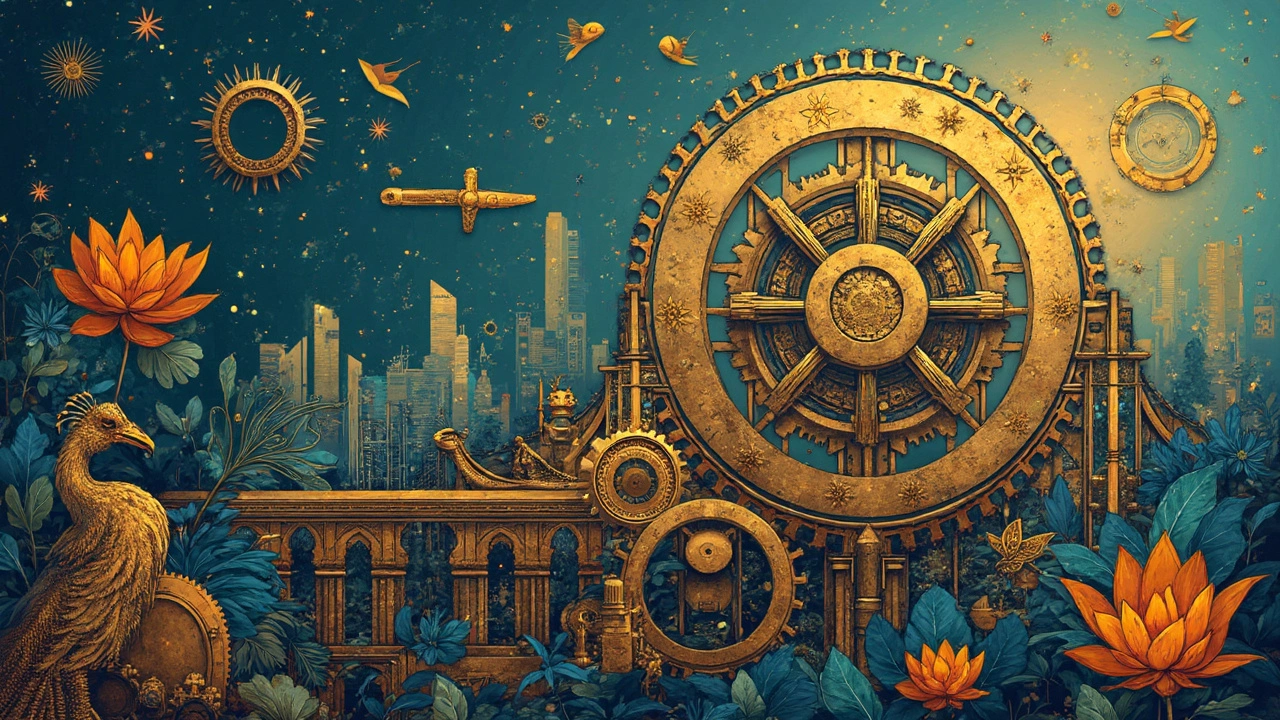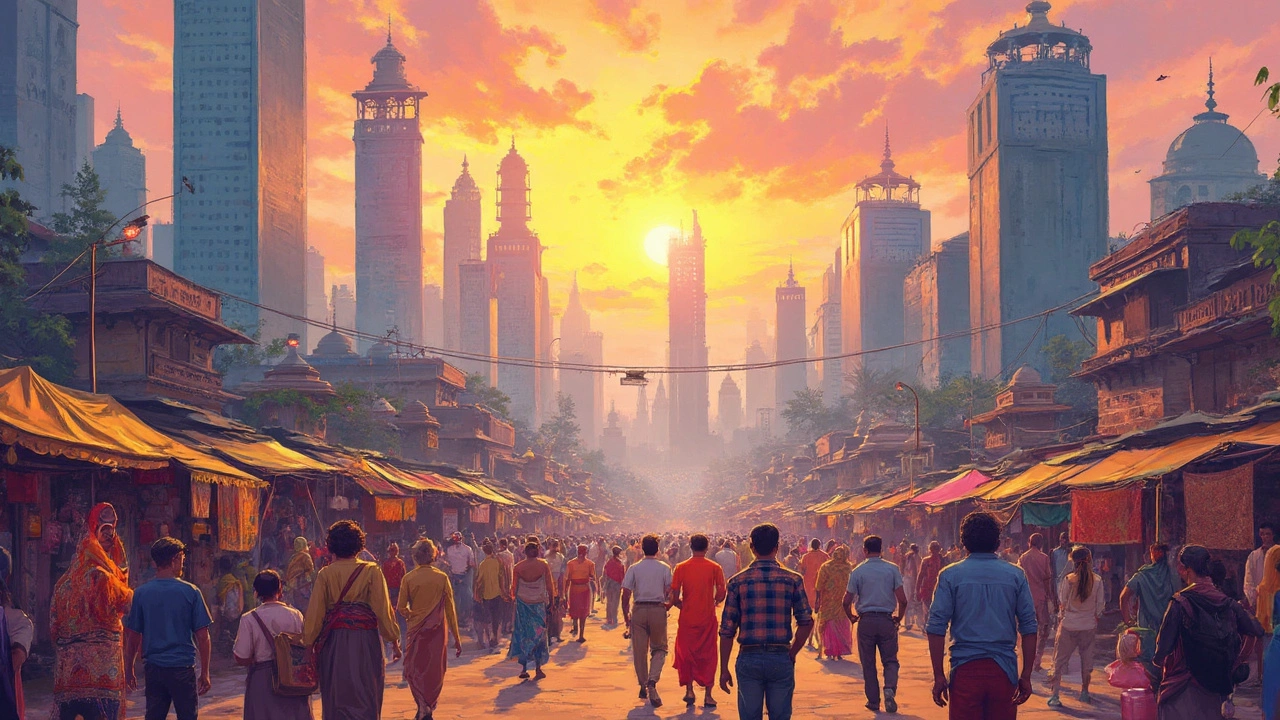The phrase 'Third World' gets thrown around quite a bit, but what does it actually mean, especially for a country like India? You're probably curious if the term fits or if it's totally out of touch with reality. Initially, during the Cold War, 'Third World' referred to countries not aligned with NATO or the communist bloc. Now, it's more about economic development and living standards.
India's landscape, both literally and figuratively, is incredibly diverse. On one hand, it's a tech powerhouse, contributing significantly to global software and service industries. On the other hand, it's grappling with issues like poverty and inadequate infrastructure.
So, how does this balance shape India's identity on the world stage today? Let's explore where India stands in terms of economic growth, societal challenges, and its influence worldwide.
- Understanding 'Third World'
- Economic Growth
- Technological Advancements
- Social Challenges
- Global Influence
- Cultural Richness
Understanding 'Third World'
Ever wondered what the term 'Third World' actually means? It's one of those phrases that have morphed over time, and many people use it without really understanding its history or implications.
The Origins
The idea started during the Cold War. At that time, countries were categorized into three groups: the First World included NATO members and allies, the Second World was the communist bloc led by the Soviet Union, and the Third World referred to countries that weren't aligned with either side.
But, fast forward to today, and things have changed a lot. These days, when people say 'Third World country', they usually mean a country that's developing or has a lower standard of living.
Current Context
So where does India fit in all this? Well, while it has faced a ton of challenges, it's not easy to pin it down with a single label. India is now the world's fifth-largest economy, which clearly separates it from what many folks think of as 'third world.'
Yes, there are issues like poverty and inequality, but India's also a global player in information technology and space exploration. No wonder the term 'Third World country' is seen as outdated by many experts.
No Single Story
India's a country of contrasts. It has bustling cities with cutting-edge technologies and rural areas with simpler ways of life. So, is India a 'Third World country'? The answer is a bit more complicated than a simple yes or no.
Economic Growth
When it comes to India, its economic story is quite the roller coaster. In the last couple of decades, the country has witnessed remarkable progress. Back in 1991, India opened up its markets to globalization, and that sparked a growth trend that's still making waves today.
India's Gross Domestic Product (GDP) is now among the world's top five, thanks to robust industries and a burgeoning workforce. The tech sector shines brightly, with cities like Bengaluru, often dubbed the Silicon Valley of India, leading the charge.
Key Economic Sectors
The tech industry isn't the only thing propelling India's economy. The agriculture sector, while not as dominant as before, continues to be a backbone, employing around half the population. Manufacturing and services have also picked up speed, contributing significantly to GDP.
Here's a snapshot of economic contributions:
| Sector | Contribution to GDP |
|---|---|
| Services | around 55% |
| Industry | about 30% |
| Agriculture | about 15% |
Growth Challenges
No economic journey is without its bumps. India faces infrastructure issues and red tape that can slow things down. Plus, the gap between the rich and the poor remains a pressing concern.
However, with initiatives like Make in India and Digital India, the government is pushing to overcome these hurdles.
The future? It looks promising if challenges are tackled right, paving the way for sustained growth and perhaps moving further away from the 'Third World' label.
Technological Advancements
India is on a roll when it comes to technology, making some big waves around the world. Let’s dive into what's driving this tech boom and why India is more than just a hub for IT services.
India's IT Powerhouse
Whenever people talk about India and tech, they often think of its vast IT industry. With giants like Infosys, TCS, and Wipro, the country plays a crucial role in global IT services. What makes this industry tick is not just the sheer scale, but the quality and innovation behind it. India’s tech workforce is vast, skilled, and growing by the day.
Startup Ecosystem
Have you heard of India's burgeoning startup scene? It's not just about big companies; there’s a lot happening at the ground level with startups popping up like wildfire. Cities like Bengaluru and Hyderabad are now fondly called India’s Silicon Valley. These startups are revolutionizing everything from finance and healthcare to education.
Digital Transformation
The government is also pushing hard for a digital transformation with initiatives like Digital India. This project aims to improve internet connectivity and make government services available online to every citizen. It's a bold move to connect urban and rural India through technology.
Tech for Good
Technology in India isn't just about business; it’s solving real-life problems too. From mobile apps designed to provide medical assistance in remote areas to digital learning platforms for students in villages, technology is improving lives. Imagine the possibilities when a farmer can access crop prices through a simple app or when students can learn coding even in the smallest of towns. It’s this use of technology that really sets India apart.
With all this happening, it's clear that India's on a fast track to becoming a global tech leader. It's showing the world how economic growth and tech can go hand in hand.

Social Challenges
When talking about India's social challenges, it's essential to remember that this vast country, home to over 1.4 billion people, has no shortage of diversity and complexity. While India has made significant strides in economic growth, the journey isn't without hurdles.
Poverty and Inequality
One of the most talked-about issues is poverty. Despite being one of the world's largest economies, a significant portion of India's population still lives below the poverty line. According to the World Bank's latest data, about 22% of India's population lives on less than $1.90 a day. The gap between the rich and the poor is pronounced, with wealth concentrated among a few.
Healthcare and Education
Access to healthcare and education remains uneven across the country. Urban areas usually have better facilities, while rural regions often lag in quality and accessibility. The government has initiated several programs to bridge these gaps, but there's still a long way to go.
Gender Inequality
Gender disparity is another critical issue. Although there have been improvements, women still face significant challenges in terms of education, employment, and personal rights. The traditional societal norms continue to influence many aspects of life, making it difficult for women to gain equal footing.
Infrastructure
Infrastructure, or sometimes the lack thereof, poses another significant challenge. While cities like Mumbai and Bengaluru boast world-class facilities, many rural areas struggle with basic amenities such as roads, electricity, and safe drinking water.
| Indicator | Value |
|---|---|
| People Living Below Poverty Line | 22% |
| Gender Ratio (Females per Male) | 0.93 |
| Rural Electrification Rate | 99% |
These challenges, while daunting, are part of what makes India such a fascinating case of development and resilience. Despite these issues, the country's rich cultural heritage and the determination of its people continue to drive progress.
Global Influence
India is not just making waves within its borders; it's playing a significant role on the global stage too. Ever noticed how many global events and discussions involve India? From economic summits to climate talks, India’s voice is being heard more loudly than ever.
Economic Powerhouse
One big reason for India’s growing influence is its economy. It's no secret: India is one of the world's largest and fastest-growing economies. With a rapidly expanding middle class, India is becoming an appealing market for international businesses. Plus, Indian companies are spreading their wings globally, acquiring foreign companies, and investing in international markets.
Technological and Scientific Contributions
On the tech front, India's got its mojo working with a booming IT industry. Cities like Bengaluru, often dubbed the Silicon Valley of India, are home to countless startups and tech giants. Moreover, India's space agency, ISRO, gained worldwide acclaim by executing cost-effective and successful missions, like the Mars Orbiter Mission. This positions India as a leader in frugal innovation.
Political and Diplomatic Clout
Politically, India has been strengthening ties with major world powers like the United States, Japan, and Russia. It's also a key player in BRICS and a founding member of the South Asian Association for Regional Cooperation (SAARC). On the diplomatic front, India's diplomatic missions across the globe are working to build partnerships in various sectors.
| Year | GDP Growth Rate |
|---|---|
| 2021 | 9.5% |
| 2022 | 8.5% |
| 2023 | 6.8% |
So, is India really a 'Third World' country? Given its global influence, economic achievements, and technological advancements, it seems that label is fast becoming irrelevant.
Cultural Richness
When we talk about India, its cultural richness is one of the first things that comes to mind. India’s amazingly diverse tapestry includes a mind-boggling array of languages, religions, and festivals. Seriously, it’s like a never-ending celebration! This diversity isn’t just a backdrop; it’s the heart of what makes India unique on the world stage.
Now, did you know India recognizes 22 major languages in its constitution? Yeah, that’s just the official count. Walk down any street, and you'll likely hear a bunch of different dialects. And that's just scratching the surface!
Festivals and Traditions
Ever experienced the explosion of colors during Holi or the lights of Diwali? These aren't just festivals; they're a big chunk of India's identity. Each region might celebrate them with its own twist, but they all come together to display India's vibrant spirit.
Influences and Arts
India's cultural influence stretches far and wide, from yoga and meditation to Bollywood, which is one of the world's largest film industries. Indian cinema entertains millions globally, with Bollywood stars having a massive following beyond Indian shores.
The classic arts like Bharatanatyam and Kathak, or traditional crafts such as block printing and weaving, add more layers to India’s rich culture. Even the food, packed with spices and flavors, reflects a history of trade and interaction with many cultures.
All these elements aren’t just part of everyday life in India. They contribute significantly to its global influence and reputation as a cultural hub.
